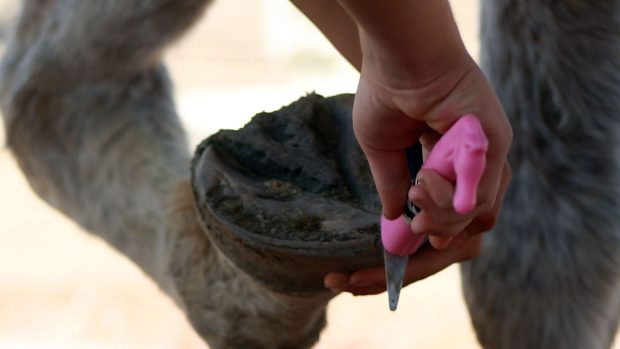There can be many explanations for itching, lumps, bumps, rashes and hair loss. Horse & Hound examines the horse’s largest organ — skin
The good news is that, as skin is the largest and most visible organ of the horse’s body, it is obvious when something is not quite right.
And, from a vet’s point of view, it is relatively easy to examine a skin problem and take a sample to establish a precise cause. The bad news is that the lesions — areas of sore, thickened or abnormal skin — can make a good horse look hideous, sometimes distressing an owner more than their animal, simply because they are so visible. There is also the fear of spread, ringworm being the classic example, which can go from horse to horse and also infect people.
When Shelley Bromley found small areas of dry skin on the legs of her skewbald gelding, Harley, last August, she didn’t worry too much. Harley had successfully overcome mud fever in the past, but this time the problem rapidly took a turn for the worse.
“Harley has quite sensitive skin as his legs are white, so I thought I’d keep an eye on it,” says Shelley.
“Within three weeks there were nasty yellow scabs from Harley’s knees down to his pasterns. I’d left him in the care of a livery yard while I was abroad, but when I returned his legs were covered in open sores that were weeping yellow pus.”
Shelley consulted her vet, Tim Galer of Peasebrook Equine Clinic. After running blood tests to rule out systemic disease and excluding possible causes such as mange mites, Tim suspected a form of photosensitivity called leucocytoclastic vasculitis.
“This autoimmune disease causes damage to the blood vessels,” explains Tim. “The condition is quite rare and is usually diagnosed from the horse’s history — it typically occurs in summer, in non-pigmented skin, so Harley fitted the bill. The lesions were located on the cannons rather than the pasterns, which is unusual for mud fever, and standard mud fever treatment hadn’t worked.”
While skin biopsies can provide useful information, the cannons are not the easiest place to take a full-thickness skin sample for analysis. For Harley, response to treatment confirmed the diagnosis.
“The problem resolved when his legs were protected from sunlight,” explains Tim. “We also applied a cortisone spray to damp down his immune system reaction.”
Harley is now free from irritation, but the condition requires management all year round. “Even in winter the UV light is strong enough to trigger the problem,” says Shelley. “His legs have to be covered at all times. I only turn him out at night in summer and he wears brushing boots for exercise.”
“It’s likely that a horse will always have a tendency to develop leucocytoclastic vasculitis once his immune system is triggered,” adds Tim.
Irritation in the lower limbs
Pastern dermatitis is an example of a skin disease that can have multiple causes and may vary in appearance, writes Karen Coumbe MRCVS.
Skin disease on the lower limbs is not limited to mud fever. Some horses with skin irritation in these areas will be suffering from infestations of tiny mites. These chorioptic mange mites are similar to those that cause scabies in humans.
Another form of pastern inflammation is leucocytoclastic vasculitis, as in the case of Harley. This condition is caused by a disorder of the body’s immune system, which attacks the skin — particularly unpigmented areas of the lower limbs.
It tends to spread up the cannon region and is usually seen on the outside and back of the legs.
Sunlight seems to aggravate the condition, which is worse in summer and in horses at pasture. Steroid treatment that diminishes the damaging inflammation is required in many cases, along with some sort of sunblock — ideally protective leg wraps, or reduced exposure to the sun. Some soothing emollients may also help, but get a diagnosis rather than just covering it up with cream.
As a vet in practice, Karen now sees more cases of leucocytoclastic vasculitis; perhaps due to increased sunlight as a result of global warming, so seek veterinary advice early on if skin problems prove persistent.
Lumps and bumps
It makes sense to have skin lesions properly checked early on. Lumps such as melanomas and sarcoids are usually better treated before they have a chance to grow.
For diagnosis, it helps to sample the true, active disease and not something that has been disguised by time and multiple medications. The majority of skin diseases are more identifiable in the early stages, before the effects of different lotions, potions and pills have altered the original appearance beyond all recognition.
Like this? You might also enjoy reading these:
Sweet itch in horses: what all horse owners need to know
The best ways to safely deal with ragwort
Equine skin is surprisingly sensitive and many of the standard antiseptics and disinfectants that are readily available can do more harm than good. Once damage has occurred, hair can change colour and skin can crust over, form scabs and become generally sore as a result of either or both inflammatory or infectious responses to various problems.
Skin responds to disease or damage in a limited number of ways, so there can be many different explanations for itching, lumps, bumps, rashes and/or hair loss.




